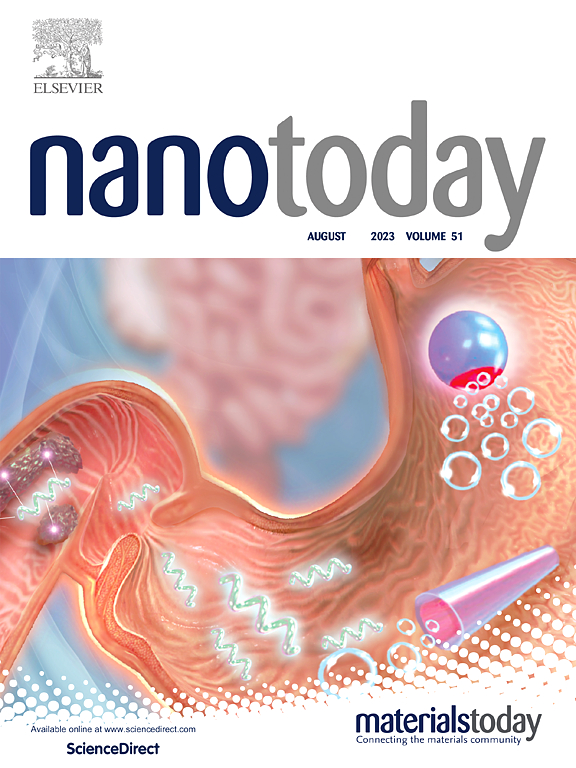Codelivery of fibronectin and rapamycin via bioactive phosphorus dendrimers to ameliorate Alzheimer’s disease through macrophage autophagy, oxidative stress alleviation and polarization modulation
IF 13.2
1区 材料科学
Q1 CHEMISTRY, MULTIDISCIPLINARY
引用次数: 0
Abstract
The primary pathogenic mechanisms underlying neurodegenerative diseases such as Alzheimer’s disease (AD) involve neuroinflammation, oxidative stress and abnormal protein aggregation, while the main challenges facing effective treatment are limited drug targeting capabilities and the blood-brain barrier (BBB) that impedes drug delivery to damaged brain regions. To address these challenges, a nanosystem based on complexes of bioactive per se phosphorus dendrimers (AK-76) with hydroxyl surface groups and protein fibronectin (FN) with both targeting and therapeutic functions that were physically loaded with rapamycin was developed. The resulting R@A/F (R for rapamycin, A for dendrimer, and F for FN) nanocomplexes (NCs) with a size of 187.3 nm demonstrate good stability, cytocompatibility and targeting performance. We show that the R@A/F NCs can cooperatively modulate microglia by lowering reactive oxygen species level, restoring mitochondrial membrane potential, enhancing autophagy, promoting microglia M2 polarization, and suppressing inflammatory cytokine secretion in vitro. With the assistance of dendrimer terminal hydroxyl groups, the R@A/F NCs can cross the BBB and improve cognitive and memory impairments in an AD mouse model by reducing brain inflammation, stimulating autophagy and facilitating Aβ protein degradation. Our study offers a versatile and highly adaptable nanoplatform for advancing the combined treatment of neuroinflammatory diseases, thus representing a significant step forward in addressing the challenges of AD therapy.
求助全文
约1分钟内获得全文
求助全文
来源期刊

Nano Today
工程技术-材料科学:综合
CiteScore
21.50
自引率
3.40%
发文量
305
审稿时长
40 days
期刊介绍:
Nano Today is a journal dedicated to publishing influential and innovative work in the field of nanoscience and technology. It covers a wide range of subject areas including biomaterials, materials chemistry, materials science, chemistry, bioengineering, biochemistry, genetics and molecular biology, engineering, and nanotechnology. The journal considers articles that inform readers about the latest research, breakthroughs, and topical issues in these fields. It provides comprehensive coverage through a mixture of peer-reviewed articles, research news, and information on key developments. Nano Today is abstracted and indexed in Science Citation Index, Ei Compendex, Embase, Scopus, and INSPEC.
 求助内容:
求助内容: 应助结果提醒方式:
应助结果提醒方式:


